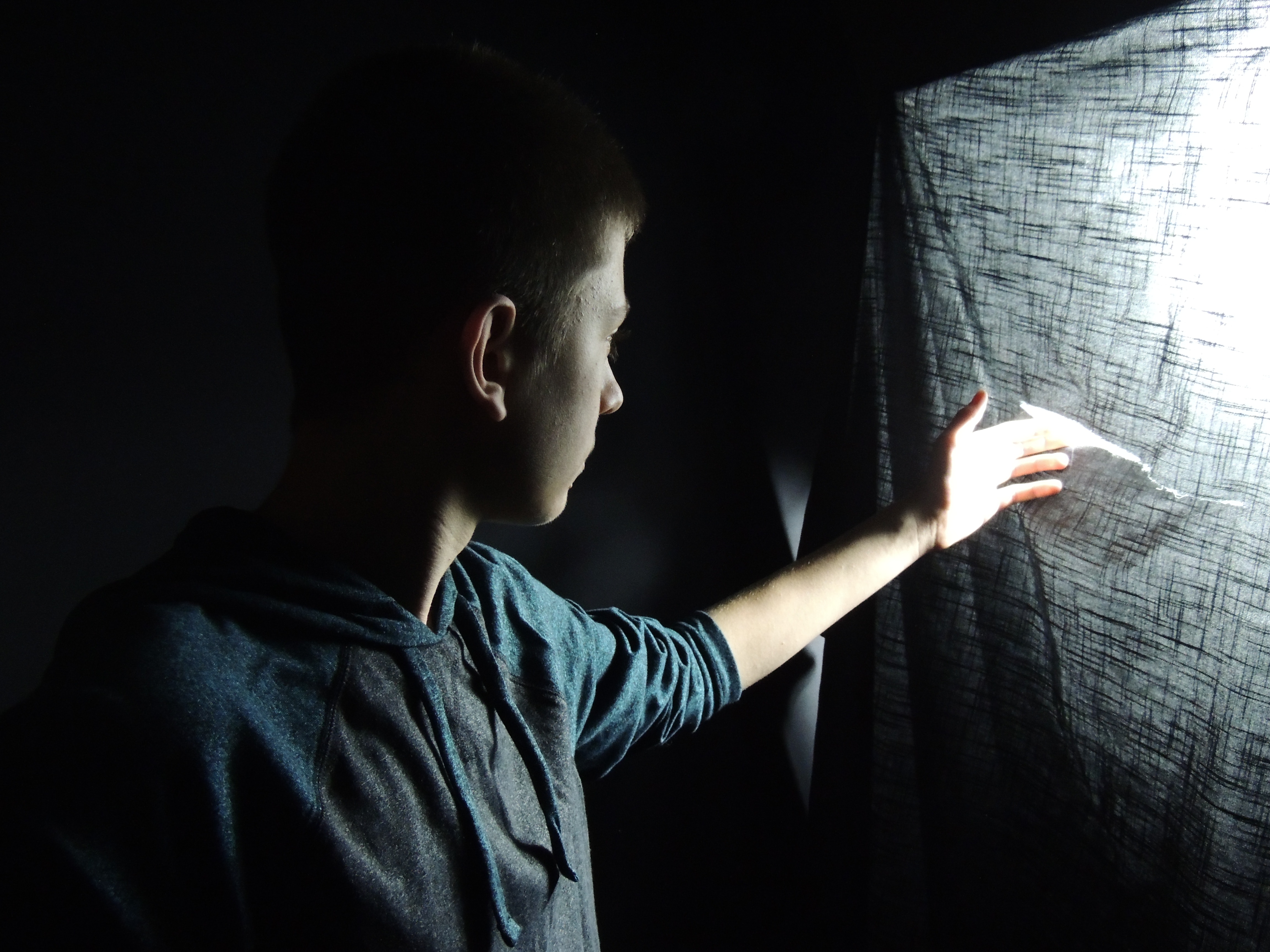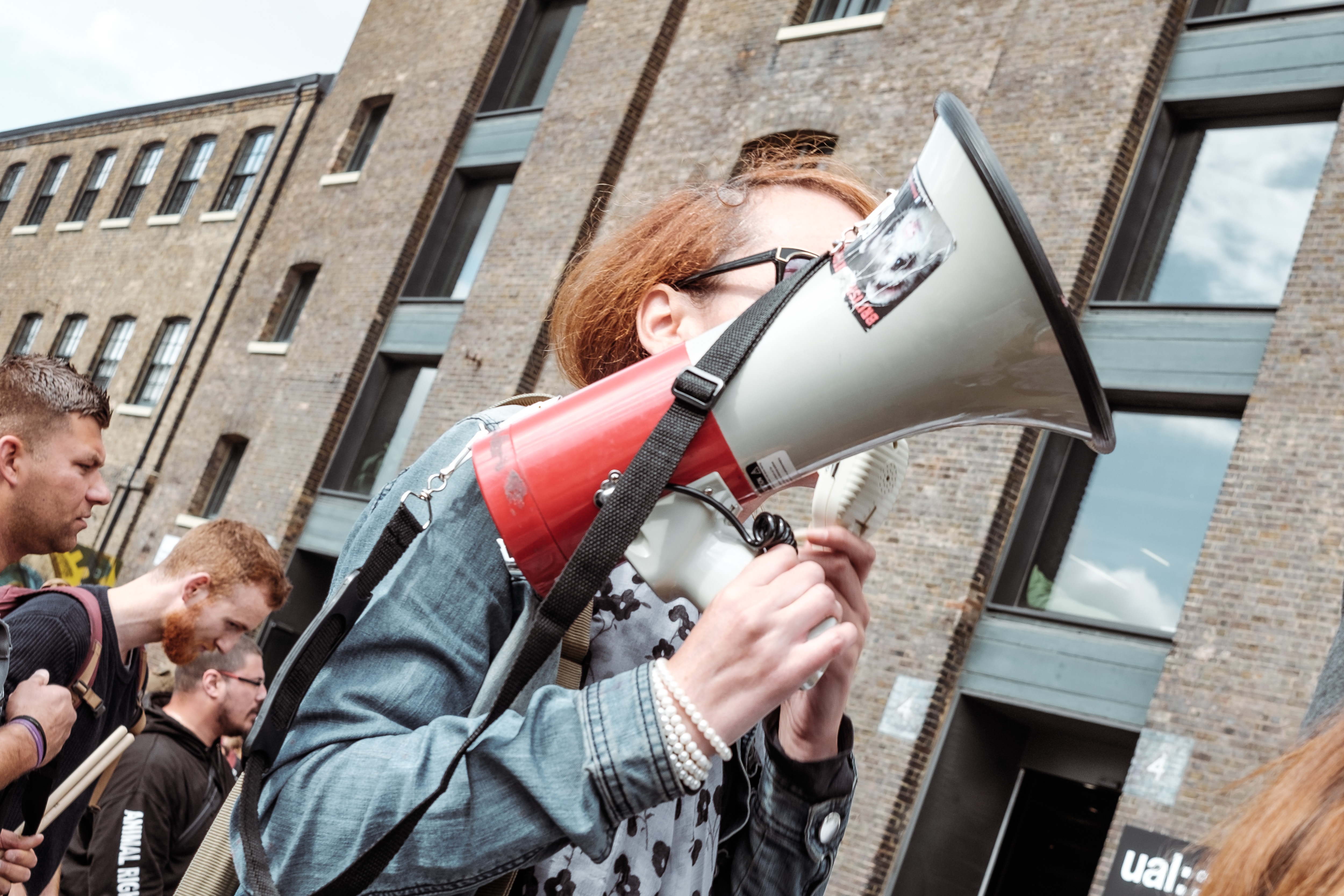This article is part of a series of stories written by the young people who took part at our seminar “A call for peace for all”. They include real life stories of people who left their countries and/or information about migration in one of the European countries where MIJARC Europe has members. All those whose names or any other identification data appear in the articles have given their written consent for making this information public.

In the context of the topic chosen for this year by our member movements – peace – we have launched an online campaign of peace messages and quotes under the #nevertakepeaceforgranted slogan. This campaign is part of our work plan which also includes two international activities and a travelling exhibition on the topic of peace. The first international activity of our work plan was preceeded by a preparatory phase during which our members had to interview/discuss with at least two people who had left their countries and are now know as “migrants”, “refugees” or “asylum seekers”. To our members they are just people, as are those living next to us. They have emotional and unusual stories, they live in different conditions but as our participants discovered they have not forgoten to be kind, tolerant, open and to forgive.
Here we bring you the article written by the participants from Belgium. The Flamish version of the article can be found below.
Asylum applications in Belgium
In 2017, 19,688 persons filed an asylum application. Of this, the General Commissioner for Refugees and Stateless Persons decided that 13,833 persons needed effective protection. Of these, 76 percent of these people received refugee status. This means that these people have left their country of origin because they fear persecution because of their nationality, race, religion, political opinion or belonging to a particular social group. The remaining 24 percent received subsidiary protection status because if they return to their country of origin there is a real risk of serious damage.
The number of asylum applications in 2017 is comparable to the number of asylum applications in 2016. If we make the comparison with the number of applications in 2015, namely 44,760, the number is much lower. With this, Belgium fulfills its European obligations and it has committed itself to make the same effort in 2018. With this, Belgium participates in the integrated policy of international protection.
If we look at the country of origin of the persons who received the decision to recognize the refugee status, we see that most people came from Syria. The top ten will be completed by Afghanistan, Iraq, Turkey, Somalia, Guinea, Iran, Eritrea, Congo and Palestine.
In Belgium there are 22,152 reception places for persons who submit an asylum application. In June 2018, 15,866 people will be taken care of in one of these places. 49 percent of these people stay here with their families, 36 percent are single men, 6 percent are single women and 9 percent of these persons are unaccompanied minor. No information is available on the reason of departure. (CGRS, 2018, Fedasil, 2018)
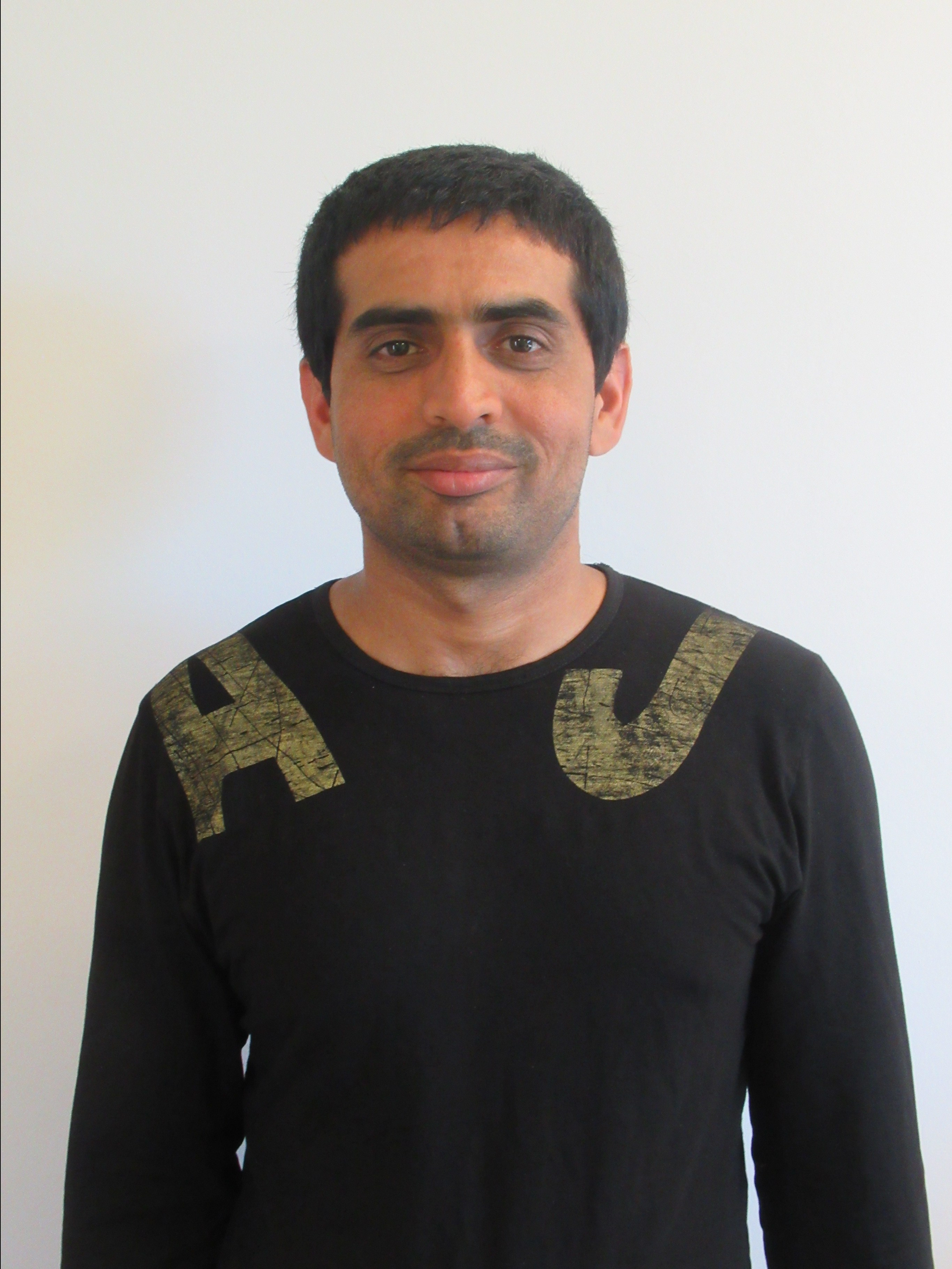
*The Belgian delegation had the chance to talk to Nazir who left Afghanistan in 2013, and after a long journey through Europe he arrived in Belgium in 2014. He travelled to Iran, from there to Turkey, Bulgaria, Serbia, Austria, Italy, France to end in Belgium. During his travelling, he had often cold, was afraid, had a lot of questions, he didn’t ate much. He travelled on foot, by bus, train, taxi, … In every country there was someone over there that could help him. His uncle paid for the migration to Europe. Which country he would end, was not known. It must be a better and safer country where human rights are important.
Bulgaria was to him the most unfriendly country, they treated him and other Afghans very bad. He also hurt his leg a lot when travelling through Serbia. But because he was illegal in Europe, he wasn’t allowed to go to a doctor by the ‘agents’ who helped him travelling. Finally, in Belgium they could help him. First it looked like Nazir would be send back to Bulgaria, but because he needed an operation in Belgium he could stay here. Now his papers are okay he looks forward to reunite his family here in Belgium. It’s a safe country, with good people who respect the human rights. In Afghanistan, he could have died. He is really grateful for the opportunity his uncle and Belgium gave to him.
Nazir arrived in Belgium in 2014. Before that he traveled a long way from Afghanistan through many countries in Europe, on foot, with a truck, bus, train and tram.
He left Afghanistan in November 2013. His uncle (the brother of his mother) has paid for the whole trip. Several “agents” helped him to continue his journey, he did not have to pay them on the way, sometimes when he wanted (extra) food or drinks on the way.
First he walked five days on foot through the mountains in Iran. “Agents” helped him to continue traveling by car and trucks. They gave the group of refugees very little food and drink. Sometimes they got a small piece of bread, then some tomatoes, … They ate only once a day.
The border with Turkey was crossed on foot overnight. The “agents” said that this was better. It was much too cold to sleep. Nazir wore a coat, but this was too thin in the cold temperatures.
The agents were also strict, saying that everyone should be quiet.
A little later they crossed the Turkish border with some 20 people in a kind of lorry and landed in a city near the border of Turkey.
There was no plan in advance that Nazir would go to. He wanted to go to a country where it was better, where he did not have to fear for his life. A country where people respect human rights, and where he was safe. A country with mutual respect.
In Turkey, the agent bought a bus ticket to Istanbul. With 5 refugees they went to a regular public bus. Each of them received a letter from the agent, with a Turkish text on which they had to write down their name and their destination (Istanbul). This they would then have to give when they got control. Nazir wanted to know what was in the letter, but the agent simply asked them to be quiet.
Finally, the police (or probably a kind of conductors) came to check the bus. Nazir was afraid to give the letter, because he did not know what was in it and if it would be alright. Eventually he did give the letter, and everything was in order for the inspector.
A second check was carried out a second time, asking for IDs, but here too the letter was enough to travel on. Nazir never knew what was in the letter.
Arriving in Istanbul, a man was waiting at the bus to wait for the group of five refugees. Nazir had his doubts, he was not sure if this person was reliable. Eventually they went along with that person. He made sure that they arrived at a building through a taxi ride of about half an hour where they had to go through a door quickly. There Nazir found another 25 or so other refugees, who had already been there for one or two days. These people confirmed that the person who brought them up there was an agent, and Nazir was so reassured.
In total, Nazir spent 4 days in Turkey, of which three together with this group of about 25 people.
Bulgaria would be the next stop after he had asked the agent.
He had to make the journey, walk through woods while it was snowing. It was certainly 12 hours of walking, which was made difficult by the snow. To get warmer he got a jacket from a friend. It was difficult to sleep and he could not eat much either. Since he thought he did not get much or any food on the way, he had paid the agent in Turkey to get a bottle of water and a bag of biscuits. He then had it on the way.
Suddenly they were stopped by police who asked them about their ID. They did not have this. These policemen called other agents, they came with different jeeps. Everyone was arrested and taken to the police station. Then they were taken to a closed institution where they stayed for at least a month. They got very little food there, the police were not respectful either. It seemed more like they were in a prison. The police had also knocked friends of him with a kind of stick to ask to be quiet, even though they did not commit a crime.
Nazir was worried.
Bulgaria was not a good country for him. “Rubbish”. He never wants to go back there.
Then they took fingerprints. And after that he was allowed to travel to Sofia. He heard that that was a big city. There were many other refugees. There he met another agent who knew the other agents who had already helped him during his journey. This man helped him to the next country: Serbia.
Serbia had many hills, where he eventually stumbled heavily. It was very serious. He could not explain exactly what it was, but he probably had torn a ligament on his knee so he could barely stand on his leg. The agent wanted him to hurry, but that did not work. Two other Afghans helped him by supporting him to take the rest of the road (another 3 hours of walking).
He then stayed in Serbia for a month until he could walk again. From there he traveled an hour with the car and then walked another 2 to 3 hours. Fortunately, it was a plain area here. Further to Hungary it was by taxi with 3 others, to a house, where they had to be silent again from the agents. There they were 2 weeks. Nazir was not sure if they were in Hungary, someone had told him that.
Furthermore, the taxi went to Austria. There they were stopped by the police. Nazir was very worried again. The police said they should not worry and took them to the police station for fingerprints. Then they were allowed to go to an open center. There was much more respect for refugees here. He stayed here for one week. Then he came in contact with an agent who had contact with the agent from Turkey. He asked him to stay in the center that day, but then to come to him.
On the way with the agent, there was no mention in the tram. Nazir had to follow the agent in silence and pay attention to signs he would do, for example, to abandon. After the officer’s sign they got off and went to the train station where the agent bought a train ticket for him. From there the journey continued to Italy. Italy was a good and normal country. From Italy it went on to France again, and then Nazir finally ended up in Belgium in 2014. According to the agent, that was a good and safe country.
The agents and other Afghans and an Arab living here helped him to refer to where he could go to request his asylum. Before that he went to Brussels, where they took his fingerprints for the third time. Through the database they knew that he was first registered in Bulgaria (where they first took his fingerprints). According to it He would therefore normally be sent back to Bulgaria in a Dublin agreement. For this there was still a consultation. Meanwhile, Nazir got a shelter in Fedasil, in Brussels he got a train ticket to get there. He spent 1.5 months there. He then received the request to go to the commissariat in Brussels again, but this was not recommended by others if he did not want to return to Bulgaria. They gave the advice to stay illegally in Belgium for 6 months and only then to return again. According to them, the fingerprints would then have been removed from the system or something similar.
Nazir then had many questions. Where did he go during that time for food, shelter, clothes? Someone showed him the way to a church where he could stay for a long time and where everything was free, donated by others.
After 6 months, Nazir then returned to the Brussels office, where he was taken to a center from which the refugees are sent back (in his case back to Bulgaria). There were many other people there who would also be sent back.
He was at his wit’s end and cried, because Bulgaria was a bad country. He did not want to go back there. Two days later he went to the doctor to see his leg that he had seriously injured a long time ago. Now he could have looked at this, earlier could or could not. They were then illegal and were not allowed to be discovered. He still could not use his leg properly.
He told the doctor that he certainly wanted to have his leg healed in Belgium, he was sure that this would not be possible in Bulgaria. They did not have respect for human rights, and in Belgium this was the case.
The doctor did not know what to answer. He sent a message to someone from the migration service. The answer to this was that Nazir could have his leg checked thoroughly. If it is a real problem, he could stay in Belgium. If this is not the case he must return to Bulgaria.
The tests indicated that surgery was needed and a long physiotherapy to recover. For this he had nothing to pay, everything was paid for him even though it was 4,000 euros for the operation alone. Nazir was overjoyed. After the operation, the physiotherapist came to Fedasil for 9 months for exercises for his leg. The assistant in Fedasil received an e-mail from the commissioner that he could submit a new asylum application. He then had to do two more interviews, with ultimately a positive answer. He then had to leave the center. He first received a home from the OCMW of Kortrijk as a temporary solution for a short time. He currently has his own house. He hopes soon to be reunited with his wife and two children aged 4 and 6 years. And he is very grateful for his permission to stay in Belgium.
If he goes back to his homeland now, there is a chance that he might die. He has informed everyone of his family that he has arrived well here, and is really satisfied.
Asielaanvragen in België
In 2017 diende 19.688 personen een asielaanvraag in. Hiervan werd er door het commissariaat-generaal voor de vluchtelingen en staatlozen beslist dat 13.833 personen effectief bescherming nodig hadden. Hiervan kregen 76 procent van deze personen een vluchtelingenstatuut. Dit wil zeggen dat deze personen hun land van herkomst hebben verlaten omdat ze vrezen voor vervolging omwille van hun nationaliteit, ras, religie, politieke overtuiging of het behoren tot een bepaalde sociale groep. De overige 24 procent kregen een subsidiaire beschermingsstatuut omdat indien ze terugkeren naar hun land van herkomst een reëel risico lopen op ernstige schade.
Het aantal asielaanvragen in 2017 is vergelijkbaar met het aantal asielaanvragen in 2016. Als we de vergelijking maken met het aantal aanvragen in 2015, namelijk 44.760 dan ligt het aantal veel lager. Hiermee komt België zijn Europese verplichtingen na en het heeft zich geëngageerd om dezelfde inspanning te doen in 2018. Hiermee werkt België mee aan het geïntegreerd beleid van internationale bescherming.
Als we het land van herkomst bekijken van de personen die de beslissing tot erkenning van het vluchtelingenstatuut ontvingen, zien we dat de meeste personen afkomstig waren uit Syrië. De top tien wordt vervolledigd door Afghanistan, Irak, Turkije, Somalië, Guinee, Iran, Eritrea, Congo en Palestina.
In België zijn er 22.152 opvangplaatsen voor personen die een asielaanvraag indienen. In juni 2018 worden er 15.866 personen opgevangen in één van deze plaatsen. 49 procent van deze personen verblijven hier samen met hun familie, 36 procent is een alleenstaande man, 6 procent is een alleenstaande vrouw en 9 procent van deze personen is een niet begeleide minderjarige. Over de reden van vertrek is geen informatie beschikbaar. (CGVS, 2018; Fedasil, 2018)
*
Nazir
Nazir kwam in 2014 in België aan. Daarvoor heeft hij een lange weg afgelegd vanuit Afghanistan doorheen vele landen in Europa, te voet, met een vrachtwagen, bus, trein en tram.
In november 2013 is hij vertrokken uit Afghanistan. Zijn nonkel (de broer van zijn moeder) heeft de hele reis bekostigd. Verschillende “agenten” hielpen hem zijn reis verder te zetten, onderweg moest hij hen niet betalen, wel soms als hij (extra) eten of drinken wou voor onderweg.
Eerst heeft hij vijf dagen te voet door de bergen in Iran gewandeld. “Agenten” hielpen hem met auto en vrachtauto’s verder te reizen. Zij gaven de groep vluchtelingen heel weinig eten en drinken. Soms kregen ze een klein stuk brood, dan eens wat tomaten, … Ze aten slechts een keer per dag.
De grens met Turkije werd ’s nachts te voet overgestoken. De “agenten” zeiden dat dit beter was. Het was er wel veel te koud om te slapen. Nazir droeg dan wel een jas, maar dit was veel te dun in de koude temperaturen.
De agenten waren ook streng, zeiden dat iedereen stil moesten zijn.
Wat later staken ze dan met een stuk of 20 personen in een soort vrachtauto de Turkse grens over en belandden zij in een stad bij de grens van Turkije.
Op voorhand was er geen plan waar Nazir heen zou gaan. Hij wou naar een land gaan waar het beter was, waar hij niet hoefde te vrezen voor zijn leven. Een land waar men de mensenrechten respecteert, en waar hij veilig was. Een land met wederzijds respect.
In Turkije kocht de agent een busticket naar Istanboel. Met 5 vluchtelingen gingen ze op een gewone publieke bus zitten. Elk van hen kreeg een brief mee van de agent, met een Turkse tekst op waar ze hun naam en hun bestemming (Istanboel) op moesten noteren. Dit zouden ze dan moeten afgeven wanneer zij controle kregen. Nazir wou graag weten wat er in de brief stond, maar de agent vroeg hen gewoon om stil te zijn.
Uiteindelijk kwam politie (of waarschijnlijk een soort conducteurs) de bus controleren. Nazir was bang om de brief af te geven, want hij wist niet wat er in stond en of het in orde zou zijn. Uiteindelijk gaf hij dan wel de brief, en was alles in orde voor de controleur.
Er werd later nog een tweede keer een controle uitgevoerd waarbij men vroeg naar ID’s, maar ook hier was de brief voldoende om verder te reizen. Nazir heeft nooit geweten wat er in de brief stond.
Aangekomen in Istanboel, stond er een man klaar aan de bus om het groepje van vijf vluchtelingen op te wachten. Nazir had zo zijn twijfels, hij wist niet zeker of deze persoon wel betrouwbaar was. Uiteindelijk gingen ze toch mee met die persoon. Hij zorgde dat ze via een taxirit van ongeveer een half uur toekwamen aan een gebouw waar ze snel door een deur moesten gaan. Daar trof Nazir nog een stuk of 25 andere vluchtelingen aan, die daar al één of twee dagen aanwezig waren. Deze mensen bevestigden dat de persoon die hen tot daar gebracht had een agent was, en Nazir was zo gerustgesteld.
In totaal verbleef Nazir zo’n 4 dagen in Turkije, waarvan drie samen met deze groep van een 25-tal mensen.
Bulgarije zou de volgende stop worden, nadat hij dit gevraagd had aan de agent.
Hij moest om de reis te maken, door bossen lopen terwijl het aan het sneeuwen was. Het was zeker 12 uur wandelen, wat bemoeilijkt werd door de sneeuw. Om het warmer te krijgen kreeg hij een jas van een vriend. Het was er moeilijk slapen en hij kon ook niet veel eten. Aangezien hij dacht niet veel of geen eten te krijgen voor onderweg had hij de agent betaald in Turkije om een fles water en een zak biscuits te halen. Deze had hij dan mee voor onderweg.
Plots werden ze gestopt door politie die hen vroeg naar hun ID. Dit hadden ze niet bij. Deze politiemannen belden dan andere agenten op, zij kwamen toe met verschillende jeeps. Iedereen werd opgepakt en naar het politiekantoor gebracht. Daarna werden zij naar een gesloten instelling gebracht waar zij minstens een maand verbleven. Ze kregen daar zeer weinig eten, de politie was ook niet respectvol. Het leek meer alsof ze in een gevangenis zaten. De politie had ook vrienden van hem geslagen met een soort stok om te vragen om stil te zijn, ook al deden zij geen misdaad.
Nazir was bezorgd.
Bulgarije was geen goed land voor hem. “Rubbish”. Hij wil daar nooit meer terug.
Dan namen ze vingerafdrukken. En daarna mocht hij doorreizen naar Sofia. Hij hoorde dat dat een grote stad was. Er waren veel andere vluchtelingen. Daar ontmoette hij weer een agent die de andere agenten kende die hem reeds geholpen hadden tijdens zijn reis. Deze man hielp hem naar het volgende land: Servië.
Servië had vele heuvels, waar hij uiteindelijk zwaar gestruikeld was. Het was heel ernstig. Hij kon niet precies uitleggen wat het precies was, maar hij had waarschijnlijk een ligament aan zijn knie gescheurd waardoor hij amper op zijn been kon staan. De agent wou dat hij zich haastte, maar dat ging niet. Twee andere Afghanen hebben hem geholpen door hem te ondersteunen om de rest van de weg (nog 3 uur wandelen) af te leggen.
Hij is daarna een maand in Servië gebleven tot hij weer wat kon wandelen. Van daaruit heeft hij een uur met de auto gereisd en dan nog 2 à 3 uur gewandeld. Gelukkig was het hier een effen gebied. Verder naar Hongarije ging het met de taxi met nog 3 anderen, naar een huis, waar ze opnieuw stil moesten zijn van de agenten. Daar waren zij 2 weken. Nazir was zelf niet zeker of ze wel degelijk in Hongarije waren, iemand had hem dat verteld.
Verder ging het met de taxi naar Oostenrijk. Daar werden ze tegengehouden door de politie. Nazir was opnieuw erg bezorgd. De politie zei dat ze zich geen zorgen moesten maken en nam hen mee naar het politiekantoor voor vingerafdrukken. Daarna mochten ze naar een open centrum. Er was hier veel meer respect voor vluchtelingen. Hier verbleef hij één week. Daarna kwam hij weer in contact met een agent die contact had met de agent uit Turkije. Deze vroeg hem om die dag nog in het centrum te blijven, maar daarna naar hem te komen.
Onderweg met de agent mocht er in de tram niet gesproken worden. Nazir moest de agent zwijgend volgen en letten op tekens die hij zou doen om bijvoorbeeld af te stappen. Na het teken van de agent stapten zij af en gingen naar het treinstation waar de agent een treinkaart kocht voor hem. Van daaruit ging de reis verder naar Italië. Italië was een goed en normaal land. Van Italië ging het weer door naar Frankrijk, en daarna kwam Nazir uiteindelijk in 2014 in België terecht. Dat was volgens de agent een goed en veilig land.
De agenten en andere Afghanen en een Arabier die hier woonden hielpen hem met het doorverwijzen waar hij terecht kon om zijn asiel aan te vragen. Daarvoor ging hij naar Brussel, waar ze voor de derde keer zijn vingerafdrukken namen. Via de databank wisten zij dat hij voor het eerst geregistreerd was in Bulgarije (waar ze het eerst zijn vingerafdrukken namen). Volgens het Dublinakkoord zou hij dus normaal gezien terug naar Bulgarije gezonden worden. Hiervoor werd er nog een overleg gepleegd. Ondertussen kreeg Nazir een onderkomen in Fedasil, in Brussel kreeg hij een treinticket om er te geraken. Daar verbleef hij 1,5 maand. Hij kreeg dan het verzoek om opnieuw naar het commissariaat in Brussel te gaan, maar dit werd door anderen afgeraden als hij niet terug naar Bulgarije wou keren. Ze gaven het advies om 6 maanden illegaal in België te verblijven en daarna pas nog eens terug te keren. De vingerafdrukken zouden volgens hen dan uit het systeem gehaald zijn of iets dergelijks.
Nazir had dan wel veel vragen. Waar moest hij gedurende die tijd terecht voor eten, een onderdak, kleren? Iemand toonde hem de weg naar een kerk waar hij gedurende lange tijd mocht verblijven en waar alles gratis was, gedoneerd door anderen.
Na 6 maanden keerde Nazir dan terug naar het kantoor in Brussel, waar hij toch werd meegenomen naar een centrum van waaruit men de vluchtelingen terug stuurt (in zijn geval dus terug naar Bulgarije). Er waren daar nog vele andere mensen aanwezig die ook teruggestuurd zouden worden.
Hij was ten einde raad en huilde, want Bulgarije was een slecht land. Hij wou er absoluut niet terug heen. Twee dagen later ging hij langs bij de dokter om eens zijn been te laten bekijken dat hij een hele tijd geleden ernstig geblesseerd had. Nu kon hij hier wel naar laten kijken, vroeger kon of mocht dat niet. Ze waren toen namelijk illegaal en mochten niet ontdekt worden. Hij kon nog steeds niet goed zijn been gebruiken.
Tegen de dokter vertelde hij dat hij zeker zijn been wilde laten genezen in België, hij was er zeker van dat dit in Bulgarije niet mogelijk zou zijn. Daar hadden ze namelijk geen respect voor de mensenrechten en in België was dit wel het geval.
De dokter wist niet wat te antwoorden. Hij stuurde hiervoor een bericht naar iemand van de migratiedienst. Het antwoord hierop was dat Nazir zijn been grondig mocht laten checken. Indien het een echt probleem is, mocht hij in België blijven. Is dit niet het geval moet hij terug naar Bulgarije.
De tests wezen uit dat er een operatie nodig was en een lange kinesitherapie om te herstellen. Hiervoor diende hij niets te betalen, alles werd voor hem betaald ook al was het 4.000 euro voor de operatie alleen. Nazir was dolgelukkig. Na de operatie kwam de kinesist nog 9 maanden langs bij Fedasil voor oefeningen voor zijn been. De assistent in Fedasil kreeg een e-mail van het commissariaat dat hij een nieuwe asielaanvraag mocht indienen. Hij heeft dan nog twee interviews moeten doen, met uiteindelijk een positief antwoord. Hierop moest hij dan wel het centrum verlaten. Hij kreeg eerst voor een korte tijd een huis van het OCMW van Kortrijk als tijdelijke oplossing. Momenteel heeft hij nu zijn eigen huis. Hij hoopt binnenkort terug verenigd te worden met zijn vrouw en twee kinderen van 4 en 6 jaar. En hij is heel erg dankbaar voor zijn toelating om in België te mogen blijven.
Mocht hij nu terug naar zijn thuisland gaan, is er een kans dat hij zou kunnen sterven. Hij heeft iedereen van zijn familie op de hoogte gebracht dat hij hier goed is aangekomen, en is echt tevreden.
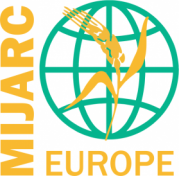
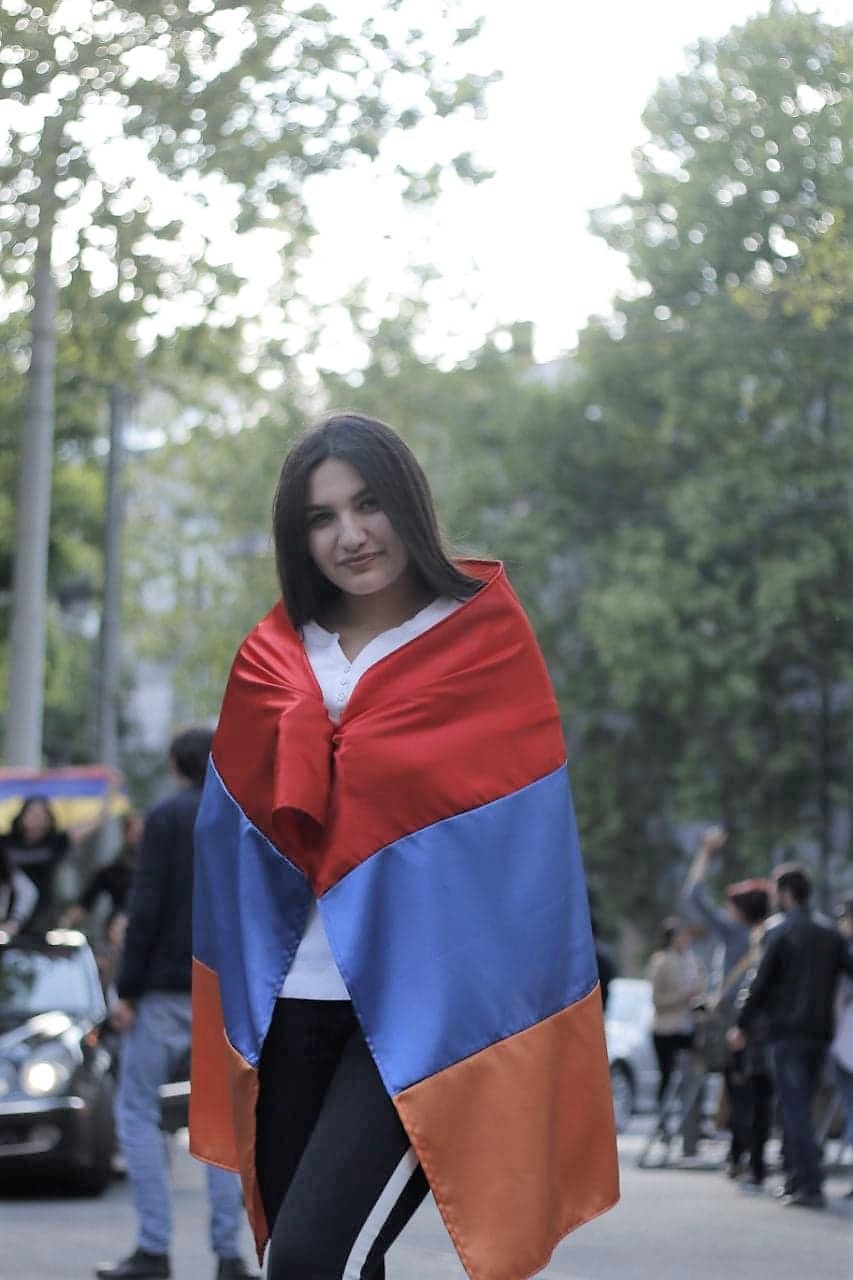
 An article written by:
An article written by: Between the 2nd and 5th July 2017, MIJARC Europe ran the international youth peace camp “We are the others”, part of the annual work plan on the topic of peace. The peace camp took place in Portugal and it was co-financed by Renovabis.
Between the 2nd and 5th July 2017, MIJARC Europe ran the international youth peace camp “We are the others”, part of the annual work plan on the topic of peace. The peace camp took place in Portugal and it was co-financed by Renovabis.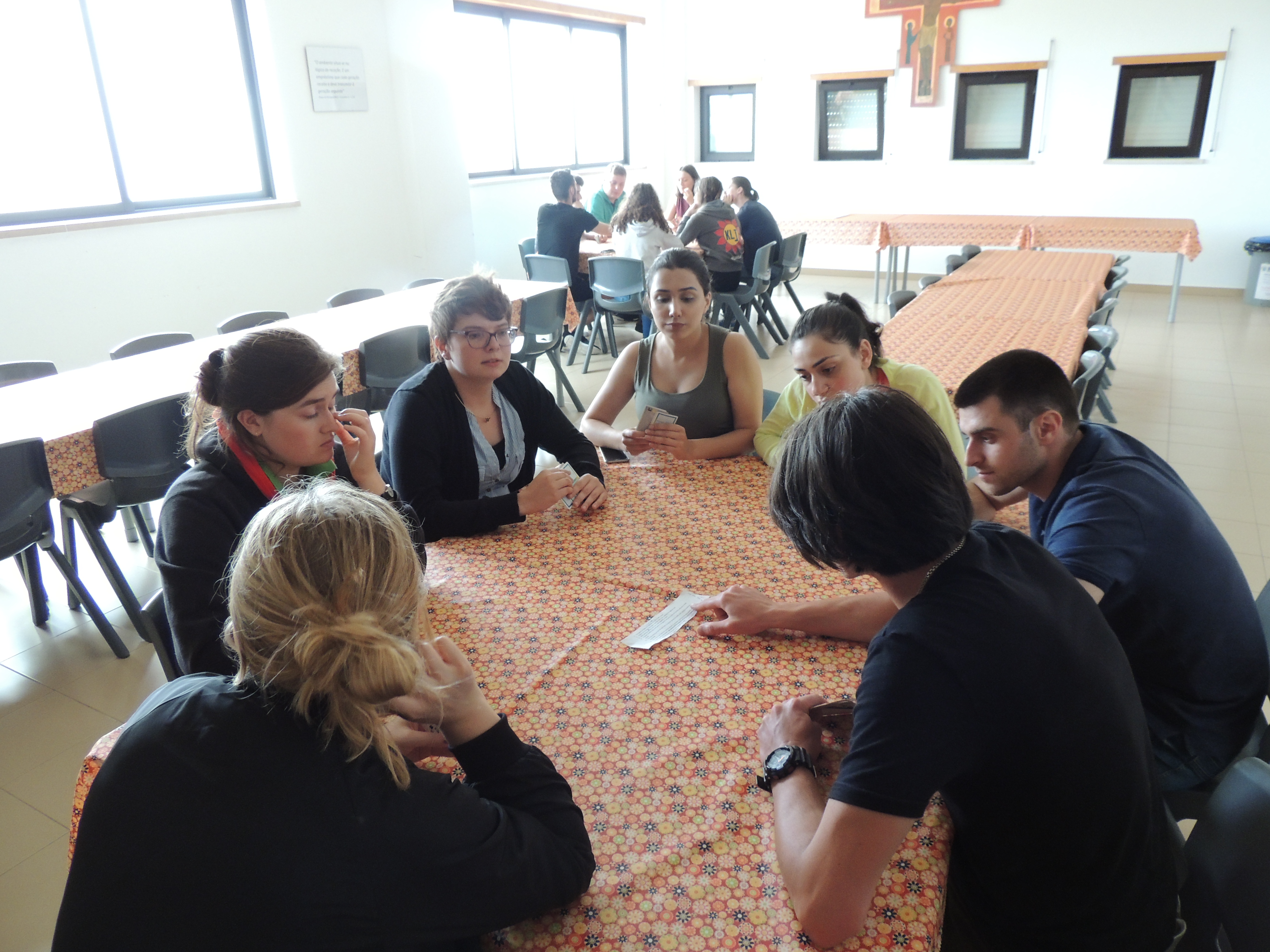 Even though Europe is still one of the most peaceful and prosperous parts of the world, there are some regions on the continent that have become unstable and more insecure and where acts of extremism and an increased fear towards the so-perceived “others” – migrants, refugees or asylum seekers and any minority group – have resulted in lower levels of tolerance, respect of human rights and freedom. In rural areas, conflict often appears because of competition for land and natural resources. In addition to this, poverty, lack of employment and opportunities of a better future can nurture resentment and cause fertile social contexts for intolerance and extremism. Also, for young people living in rural areas conflicts often have devastating consequences making them even more vulnerable.
Even though Europe is still one of the most peaceful and prosperous parts of the world, there are some regions on the continent that have become unstable and more insecure and where acts of extremism and an increased fear towards the so-perceived “others” – migrants, refugees or asylum seekers and any minority group – have resulted in lower levels of tolerance, respect of human rights and freedom. In rural areas, conflict often appears because of competition for land and natural resources. In addition to this, poverty, lack of employment and opportunities of a better future can nurture resentment and cause fertile social contexts for intolerance and extremism. Also, for young people living in rural areas conflicts often have devastating consequences making them even more vulnerable.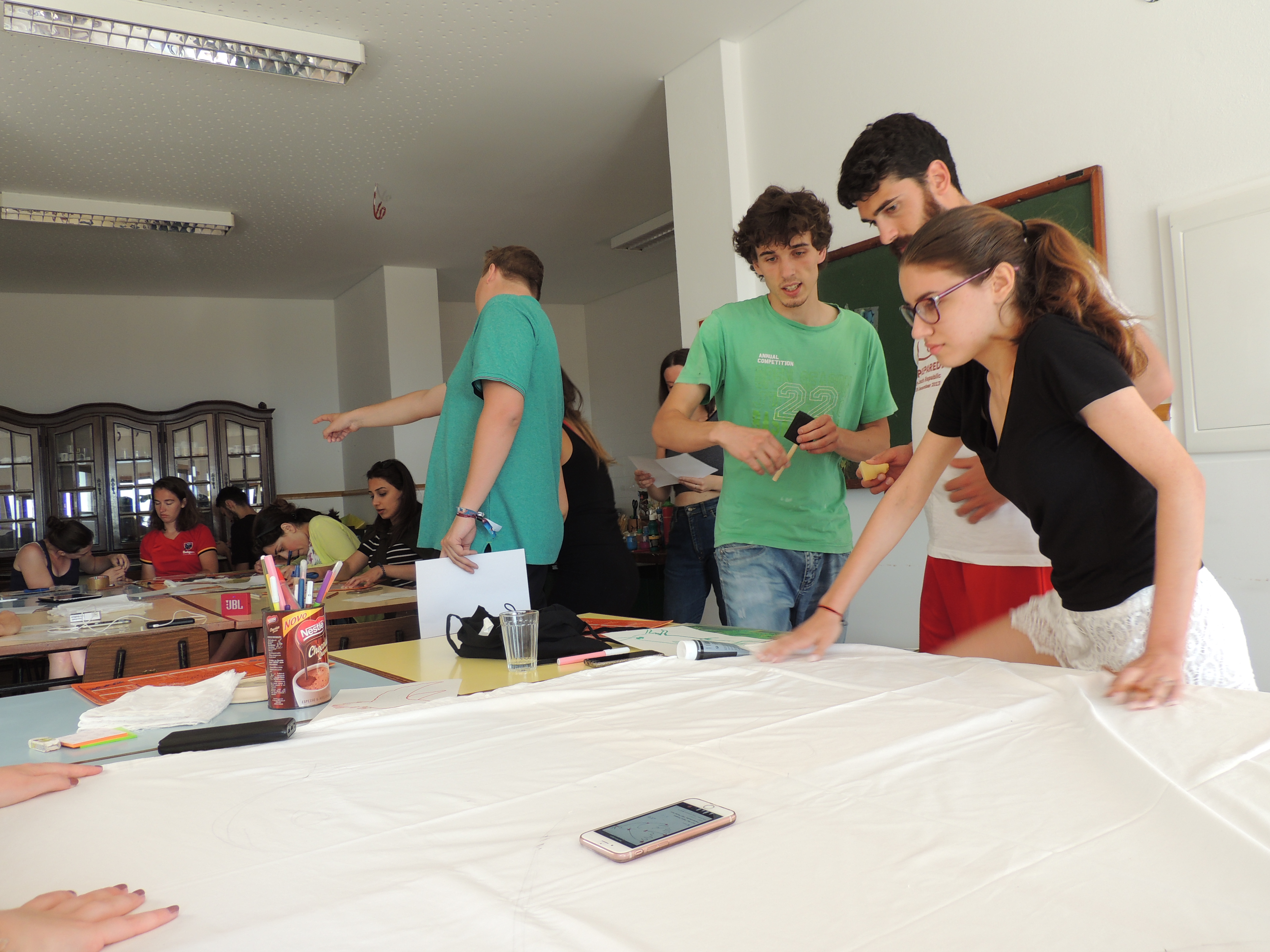 “We are the others” is a youth project that aims to prove everybody exactly what it says: that we all are responsible ourselves for all the situations we are part of. It sends the message that it is always in our power to generate change and play our positive role in our community, country, in Europe and around the world. The project aims to make the young people involved and those it reaches aware of the important and positive role they play in the maintenance and promotion of peace and security at all levels. Its objectives are to encourage tolerance, solidarity and intercultural dialogue exerted by young people as means of moving beyond the mistakes of the past and building the future, to help the rural young people participating in the project acquire intercultural competences in order to become more aware and active citizens for peace, countering radicalization and extremism, to promote a different narrative on the role of young people in conflict contexts depicting them as assets in peace building and peace maintaining and to create a tool for young people to spread their message of peace and social inclusion in their rural communities. It will do this by involving 30 young people from rural areas across Europe: Armenia, Belgium, Bulgaria, France, Germany, Italy, Malta, Portugal and Romania and migrants, refugees or asylum seekers located in Portugal. They all decided to join forces and invest in the development of their intercultural competences in order to be more prepared to work and live with vulnerable groups, to promote social inclusion in their communities and diffuse tensions that appear whenever we see those different from us as “the others”. Through the project, the young participants will create together a Position Paper and a travelling photo exhibition that will include portraits and stories of conflict and peace and photos that will suggest solutions for what young people can do today in order to build a safer and peaceful future.
“We are the others” is a youth project that aims to prove everybody exactly what it says: that we all are responsible ourselves for all the situations we are part of. It sends the message that it is always in our power to generate change and play our positive role in our community, country, in Europe and around the world. The project aims to make the young people involved and those it reaches aware of the important and positive role they play in the maintenance and promotion of peace and security at all levels. Its objectives are to encourage tolerance, solidarity and intercultural dialogue exerted by young people as means of moving beyond the mistakes of the past and building the future, to help the rural young people participating in the project acquire intercultural competences in order to become more aware and active citizens for peace, countering radicalization and extremism, to promote a different narrative on the role of young people in conflict contexts depicting them as assets in peace building and peace maintaining and to create a tool for young people to spread their message of peace and social inclusion in their rural communities. It will do this by involving 30 young people from rural areas across Europe: Armenia, Belgium, Bulgaria, France, Germany, Italy, Malta, Portugal and Romania and migrants, refugees or asylum seekers located in Portugal. They all decided to join forces and invest in the development of their intercultural competences in order to be more prepared to work and live with vulnerable groups, to promote social inclusion in their communities and diffuse tensions that appear whenever we see those different from us as “the others”. Through the project, the young participants will create together a Position Paper and a travelling photo exhibition that will include portraits and stories of conflict and peace and photos that will suggest solutions for what young people can do today in order to build a safer and peaceful future.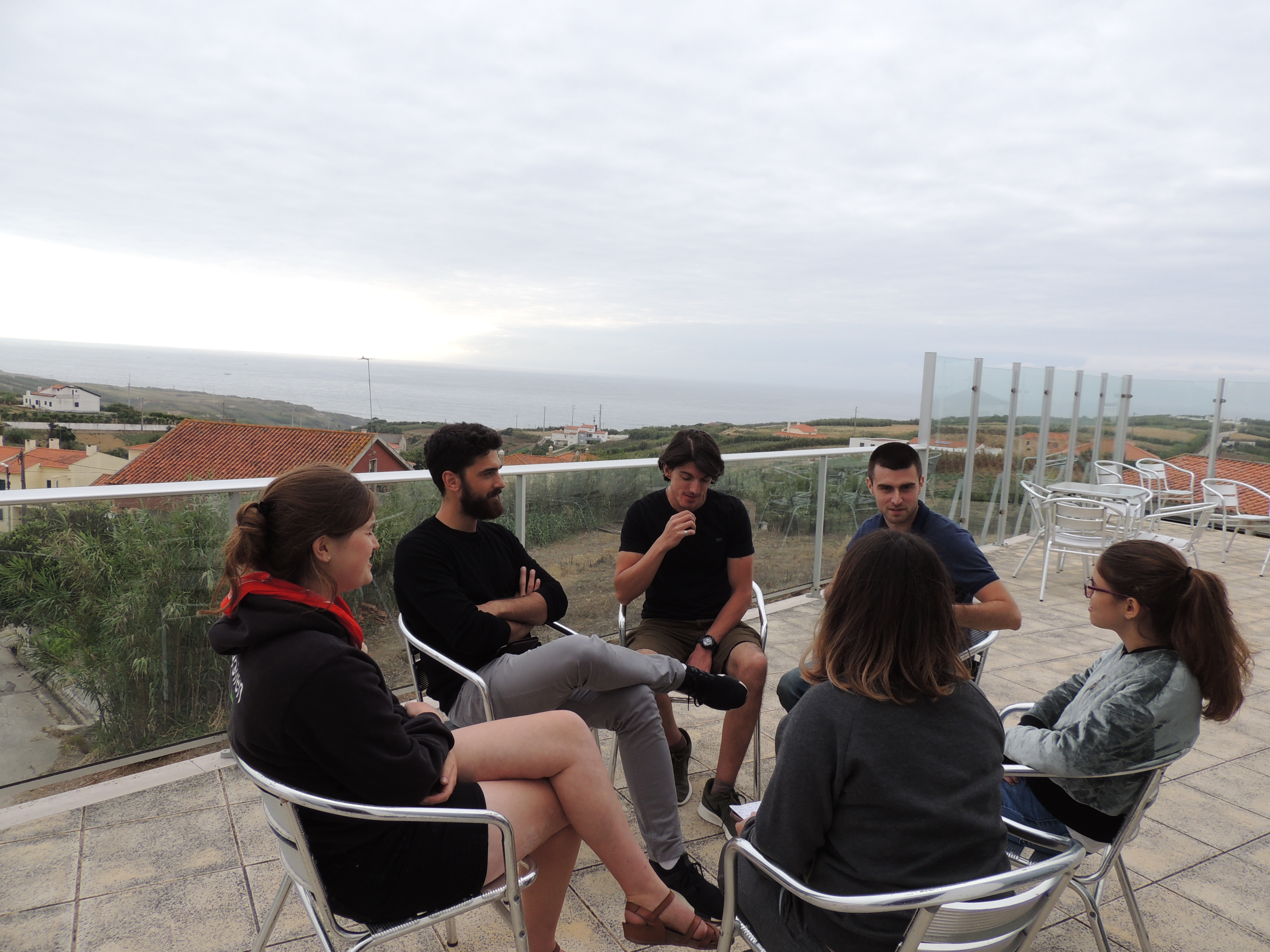 The exhibition will be accompanied by an educational booklet, containing activities designed by the participants that can be done with the exhibition. This exhibition will travel to eleven different countries, to meet with 500 young people and it will also be displayed at a peace festival where it will be seen by more than 5,000 young people from all over Europe.
The exhibition will be accompanied by an educational booklet, containing activities designed by the participants that can be done with the exhibition. This exhibition will travel to eleven different countries, to meet with 500 young people and it will also be displayed at a peace festival where it will be seen by more than 5,000 young people from all over Europe.